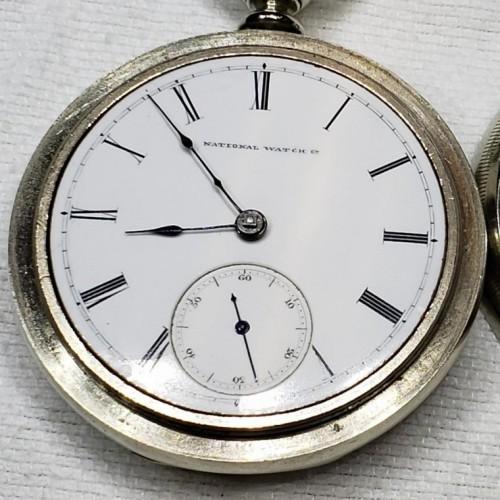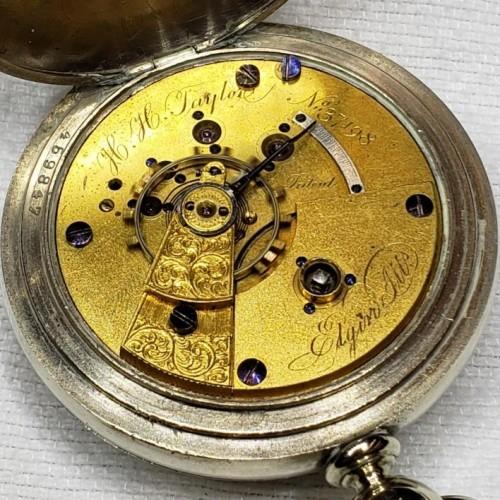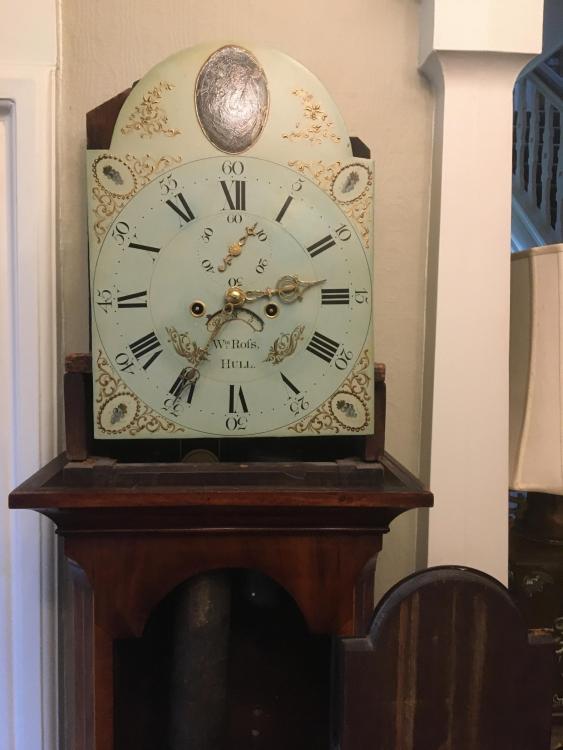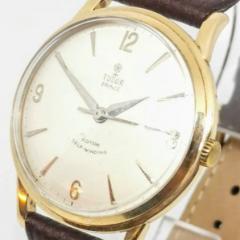Leaderboard
Popular Content
Showing content with the highest reputation on 11/26/19 in all areas
-
Don't know to exact screw size but this one is not critical just purchase a selection screws available from most material houses. Some hairspring studs have a groove in them to aid alignment so the screw will have to be tapered to fit.2 points
-
Very true @yankeedog. I have an Elgin pocket watch from 1869. Elgin was founded as the National Watch Company in 1867. The dial is pre Elgin. It's a low serial number, under 38,000 if memory serves. It was a wreck when I got it. Bad balance, missing both banking pins, no hour wheel, no dial, no hands and naturally, no case. I was able to source all the missing parts minus one banking pin. I had a sliver swing out case with a unique inlaid grizzly bear walking along train tracks that had a broken winding stem. I felt that was the proper case for it. Both had character and told a story. It runs strong and doesn't miss a beat. No one irl but me knows the story behind the watch and the time and effort involved. It is a source of inner pride as I'm sure most of us feel when we resurrect and restore a watch in poor condition.2 points
-
Hi I think there are more being worn out there than we think but how many of you would admit to that ? not enough street cred in a Timex. Me if it works and you like it wear it I have several including a micky mouse one and keep them for postertity. My daily watch cost me a tenner and is a good runner and quartz. At my age Iam past street cred. It looks reasonable keeps good time and glows in the dark what more do you need. Long live common sense.2 points
-
1 point
-
Please note that we have a dedicated section for repair questions, as well one to introduce oneself, that is always considered polite. Anyway, how you know for sure that the coil needs replacement? It has to be tested with a low voltage tester. P/N A4002.519 Cousins UK has it for £21.75 but for about the same I'd rather get a complete watch https://www.ebay.com/itm/Gents-wristwatch-PULSAR-KINETIC-100-M-by-SEIKO-watch-spares-or-repair-5M42A/3333618538471 point
-
1 point
-
On even a 60m WR watch I don't think the glass would pop out as the gasket keeps it in place tightly. To use a pump you have to remove caseback and stem, then refit the caseback but on Seiko 5 and divers (no casing tabs) the mov't would come out that point. Then to refit the glass a press is needed anyway. That's why you should use a glass not a pump when the caseback can be removed.1 point
-
Mobile DTE series of oils are "hydraulic" oils that are commonly used also in machine spindles. Here I buy from Motorex, their Correx HLP line, which is great for machine spindles, is "hydraulic", and specced for use in hydraulic systems and plain and rolling bearings. I don't know the full story on Mobil 1 going abrasive, it was about 20 years ago; I did look it up back then but can't find anything now. The fact that the fellow re-serviced a number of tower clocks made it seem pretty legit, but in poking around I see that a number of clockmakers recommend it these days. I think the issue in the clocks is the very slow moving components, and long interval between cleanings. In a lathe spindle I doubt there would be any issue at all.1 point
-
Are you checking with a timing machine while moving the regulator or just checking the rate over a certain length of time, comparing to another timekeeper? This is a very crude movement, you can't expect it to keep better than a few minutes a day.1 point
-
You can see in that video that the jewel is measuring a hair over 1.09mm on the dial. It may be that it is just slightly out of calibration, but likely it is the inherent problem of dial type measuring tools (indicators); there is a rack and usually a couple of gears and a large hairspring, all of which can induce error. I am pretty certain that jewel measures 1.10 spot on within a couple of microns, and it would be clearer with a screw type micrometer like the Bergeon 30112. The Feintaster is a good tool but it just can't be as accurate as a screw. The spring doesn't provide "insanely" small pressure but it's pretty darn small. Micrometers with non rotating spindles, like the Bergeon are a bit more forgiving than ones that turn as far as marking the piece being measured. You don't want to turn until the ratchet thimble clicks when measuring small stuff- just until you feel contact is made.1 point
-
1 point
-
Sun? What is this sun you speak of? I'll have to keep an eye out for it.1 point
-
I have the basic Jeweling set and managed to get the high end set with the pivot strengthening tool among other items. Sent from my iPhone using Tapatalk Pro1 point
-
You're missing the fact that they're only being worn, collected and restored by Andy. Lol.1 point
-
Thanks @dadistic - that's where I was coming from. Just one last thing @VWatchie from me that I would say is good general practice when using a micrometer on anything very delicate: instead of screwing the micrometer into the item adjust the micrometer to a sensible reference and then check fit; repeat until satisfied. With jewels for instance we know that they go up in 0.01mm increments. So say you estimate a particular jewel hole is 0.10mm then you would pre-adjust your micrometer to this ... and then check if the pivot slips within the jaws of the micrometer. No? So you adjust to 0.11mm and re-check. Now the pivot slips within the jaws with just enough movement to rotate ... that's the jewel hole size you need. @nickelsilver makes a valid and excellent point but imho you should never be using a micrometer in a such a way you can damage a part. And of course with a jewel hole you want it just bigger than the pivot so you don't need to be squeezing the micrometer onto the pivot ... just keep to an increment.1 point
-
I also have a video on how to make a good leather lathe belt. Sent from my iPhone using Tapatalk Pro1 point
-
Mbk Some really good advice from all who's contributed already. I find myself in a similar position to you with the family long case clock, see earlier posts where OH was very helpful in dating the clock. We differ in that I've been "playing about" with watches for some time before the clock came into my possession. I've also lately been doing some clock work on mantle clocks of varying degree of complication. Been enjoying working on the clocks but I'll not be touching the family clock for a while longer, at least until I've learned some more, and have significantly more space to work in. Everything is significantly bigger in the long case clock than the half dozen Elliott's that I'm currently working my way through. Enjoy the journey. Sent from my moto g(6) play using Tapatalk1 point
-
I (and others) use a piece of ordinary silver steel (1.2210, 115CrV3), harden and temper the piece to light blue color. Frank1 point
-
This should put your mind at rest. Click on this link. http://members.iinet.net.au/~fotoplot/sdriver/sdriver.html1 point








